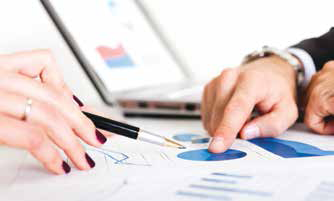Issue No.10 / June 16,2015

In the previous issue we had discussed what a Profit & Loss Account is, what it contains. In this article let me dwell a bit on the Balance Sheet.
Let’s continue our discussion on the second rule of Good Finance Management, that I began in the previous issue.
In the case of Balance Sheet A, out of a total asset base of 1,000, the owners’ contribution, direct plus indirect, is to the extent of 75 percent. In the case of B the direct contribution of the owner is merely 15 percent, and including reserves, it works out to 25 percent. The bulk of the funding has come from outsiders. If B gets into trouble, the outsiders stand to lose far more than the owners.
A lender must also take into account the worst case scenario before making a decision.
What is the worst thing that can happen once you have lent the money? The business may fail.
If this happens, the only way to recover the money would be by selling the company’s assets.
The total of the Assets’ side in both cases is 1,000.
However, when a business closes and there is a distress sale, assets often fetch a value that is far lower than their book value.
It’s also possible that some assets which appear on the Balance Sheet do not even have a resale value. (On the other hand, of course, there is also the possibility that the business possesses real estate which has appreciated in value, and this may fetch amounts substantially higher than the book value).
B owes outsiders 750. If the assets fetch a price lower than 750, which is quite likely, the creditors of the organization may not be able to recover their money.
A, on the other hand, owes outsiders only 250. Even if the assets can be disposed of at one fourth the book value, the lenders will be able to recover all their dues.
| Balance Sheet(A) | |
|---|---|
| Liabilities | Assets |
| Share Capital 450 | Fixed Assets 750 |
| Reserves & Surplus 300 | |
| Long-Term Loans 200 | Current Assets 250 |
| Creditors 50 | |
| 1000 | 1000 |
| Balance Sheet(B) | |
|---|---|
| Liabilities | Assets |
| Share Capital 150 | Fixed Assets 750 |
| Reserves & Surplus 100 | |
| Long-Term Loans 650 | Current Assets 250 |
| Creditors 100 | |
| 1000 | 1000 |

Let us now understand Rule II and in the process also learn how to read a balance sheet.
So far you have seen that in a typical Balance Sheet there are four items on the left and two on the right as shown here.
Instead of Current Assets on one side of the Balance Sheet and Current Liabilities on the other, you will often see Net Current Assets that is, Current Assets less Current Liabilities, appearing on the Assets’ side of the Balance Sheet. These are also called Net Working Capital.
| Balance Sheet | |
|---|---|
| Liabilities | Assets |
| Share Capital | Fixed Assets |
| Reserves & Surplus | |
| Long-Term Loans | Current Assets |
| Current Liabilities | |
Balance Sheets are actually made up of far more numbers than you see here. But to make Balance Sheets easier to read and more meaningful, many items are clubbed together and reduced to six headings, four on one side and two on the other. It is possible that you will come across a Balance Sheet which has numerous items on each side. Don’t get confused. If you study each of them you will find that they can all be classified under one of these headings.
An example of a Balance Sheet detailing the different items under the six heads is shown at the end of this chapter.
If you wish to read a Balance Sheet make sure it has not more than four items on the Liabilities’ side and not more than two on the Assets’.
...to be continued
By Dr Anil lAmBA